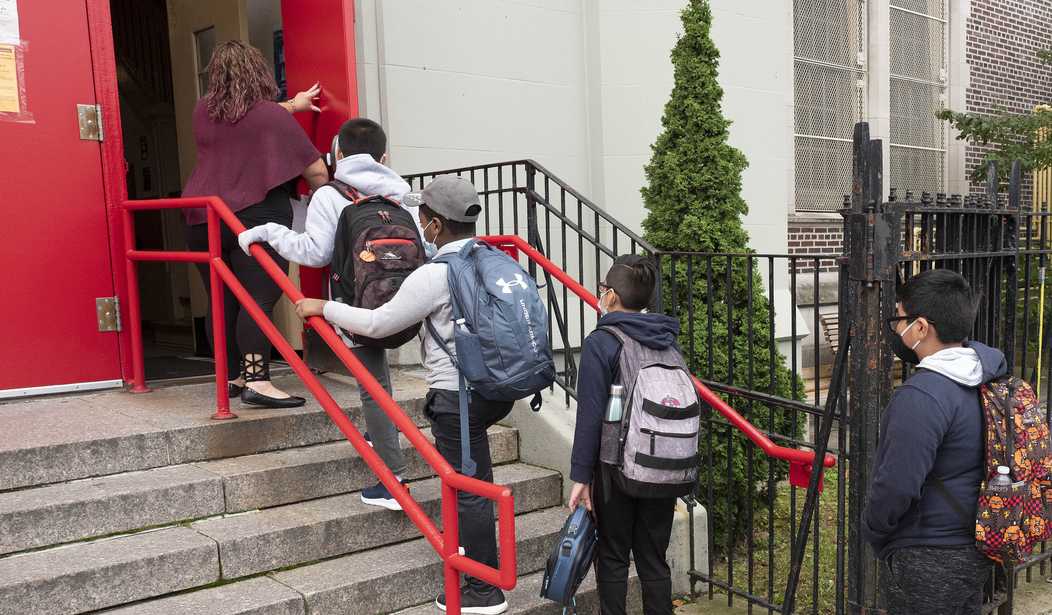The fact that some children in this country went without in classroom learning for over a year because of the pandemic is certainly tragic, but not merely because students went without a proper education and proper socializing. There's a staggering economic cost as well. As Bryan Walsh reported for Axios, such a long-term economic cost could reach into the trillions.
Walsh cites "COVID-19 School Closures: Long-run Macroeconomic effects," from the Wharton School at the University of Pennsylvania."
Researchers note that:
PWBM estimates that the learning loss from school closures reduced GDP by 3.6 percent in 2050. Extending the 2021-22 school year by one month would cost about $75 billion nationally but would limit the reduction in GDP to 3.1 percent. This smaller reduction in GDP produces a net present value gain of $1.2 trillion over the next three decades, equal to about a $16 return for each $1 invested in extending the 2021-22 school year.
...
A drop in productivity drags down economic growth and wages. Overall, we project that the productivity losses current K-12 students experience as a result of school closures lead to a 3.6 percent decrease in GDP and a 3.5 percent decrease in hourly wages by 2050 relative to the counterfactual where there had been no disruption to learning. Government tax revenues decline and, consequently, government debt cumulates more quickly. Higher debt along with less total savings by individuals with lower incomes leads to a lower real capital stock, lowering wages and GDP further. By 2050, the nation’s capital stock will be 4.1 percent lower and government debt will be 5.2 percent higher. Note that current primary schoolers will be aged 34 to 40 in 2050, so the drop in their productivity will continue to affect the economy for many years afterwards.
Recommended
Walsh also writes "That's a result of lowered labor productivity in the workers of tomorrow due both to disrupted education and the generally inferior substitution of remote learning, especially as it was practiced during the pandemic," linking to "Why education technology can’t save remote learning," by Ashley Gold.
Truly, our children and our economy are being subject to a significant disadvantage, made all the more frustrating by just how cozy the Biden administration and the teachers union were reported to have been.
According to the Burbio School Opening Tracker, more than 30 percent of K-12 students still aren't attending school every day. The tracker explains that states are "Calculated by weighting % virtual instruction at 0, % hybrid instruction (2-3 days per week in-person) at 50 and % traditional (5-days in person) at 100."
While 12 states are at 100 percent, Hawaii as the worst state is at 38.5 percent and California as the next is at 53.5 percent.
























Join the conversation as a VIP Member